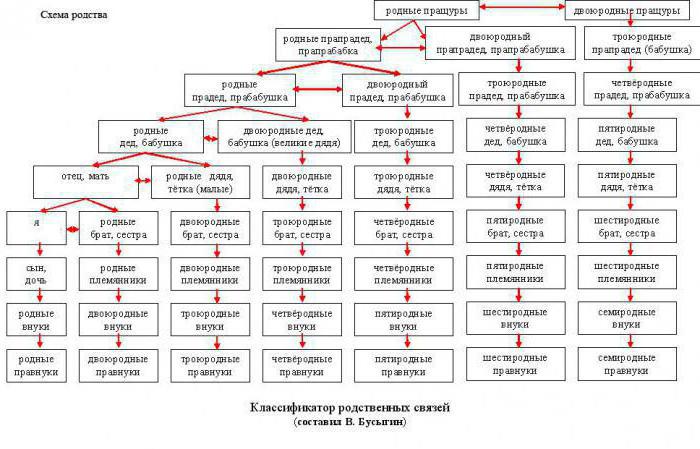Family law is a system of legal standards that regulates relations within a narrow circle of people connected by a certain degree of kinship, otherwise, within the family. The relationship of a person to a family arises either upon birth or as a result of marriage. In any case, such relations may include property or be of a non-property nature. In full understanding of the level of organization of this industry, legal facts in family law will help.

Family Law Principles
Each branch of law is separated from the other by some principles, and family law is no exception. However, most of the principles are somehow obvious to a simple layman and only for clarity of concept are classified in the law:
- Family members can only be individuals - citizens. This is the primary property that distinguishes family law from any other where legal persons can be involved.
- Family legal relations arise from the legal facts of kinship: fatherhood, motherhood, marriage, adoption, etc.
- As a rule, family relations are non-property (are gratuitous) and last (operate) longer than other legal relations.
- The subjects of relations cannot be replaced by other persons; otherwise, family rights are inalienable (they cannot be sold, donated, bequeathed, etc.).
As in any other industry, family law distinguishes an object and a subject.
Family Law Object

The objects of family law are the relationships between family members (actions) or things (as an object of property relations). Examples of objects: movable and immovable property, income, last name (when changing due to various circumstances), etc.
Subject of family law

Individuals themselves are considered to be the subject of family law - citizens connected by a certain degree of kinship or legalized family legal relations (adoption, guardianship). As already noted, the subject cannot be replaced, and when considering cases of family offenses in court, they require the presence of the family member himself, and not only his lawyer, as is sometimes possible with administrative or civil penalties.
Legal capacity
Family legal capacity - the ability to have personal property and non-property relations and bear specific responsibilities - arises with birth and ceases with death. However, only competent citizens can be participants in legal relations. But family legal capacity does not come from 16 or 18 years old, but much earlier. In some cases, the child’s opinion in court is mandatory for consideration if he has reached 10 years of age (for example, with the divorce of parents).
Legal Facts
Legal facts in family law are actions that are the basis for the emergence, termination or change of family ties. The facts in family law have the same attributes as legal ones in general.
Common symptoms
- Facts are a phenomenon of reality.
- Facts exist regardless of citizen awareness.
- The facts entail certain legal consequences.
Specific features
In addition to the main features, legal facts in family law have their own specifics.
- Established by the norms of the Family Code (SK RF).
- In most cases, the consequences are connected with a group of facts, and not with one specific one, that is, with the actual composition.
- The power of a legal fact in family law is possessed by the state: kinship, adoption, marriage, etc.
- These conditions are lasting and can act as a legal fact an unlimited number of times.
- Timing is of great importance.
Legal term (limitation) is the term for protecting the rights of a person in a lawsuit alleging that the right has been violated. For example, Art. 38 the maximum period for the division of common property upon divorce is three years. But in certain cases, the deadlines can be set by the court or by the participants in the legal relationship.

The concept of legal facts in family law is divided into several types. Such a classification appeared at the dawn of the creation of family law and improved with time.
Types of Facts
The number of legal facts is too vast, so it was decided to classify them into specific groups. There are groups of legal facts in family law, classified according to the following criteria:
- By strong-willed sign. Here, the facts are divided into actions (the result of conscious activity, for example, the birth of a child) and events (circumstances occurring outside the will of people, for example, the death of a spouse).
- By the timing of the course. Short-term facts exist for a short period of time and give rise to legal consequences: marriage, birth, death. Long-term ones exist for a long period of time and at each new stage generate new consequences or change old ones.
- On legal consequences. They are divided into 5 subgroups: law-making (birth of a child, marriage), law-changing (changes in the marriage contract), law-ending (divorce, death), law-abiding (Article 17 of the RF IC: a husband cannot initiate a divorce case without the consent of his wife during her pregnancy and in the first year after childbirth), legal restoration (restoration of parental rights).
Types of legal facts in family law are of great importance and allow more accurately classify the rights of relatives and facilitate the situation of the court. Family law has always been improved, from antiquity to the modern world. The concept of legal facts in family law has received a classification relatively recently.
Degrees of kinship
The degree of kinship is the number of generations preceding the appearance of kinship between individuals. The concept of kinship as a legal fact in family law has been used since the inception of family law as such. Now there are two types of such a connection:
- Direct. It arises on the basis of the origin of one person from another, it is descending (ancestor-descendant: children - grandchildren) and ascending (ancestor-descendant: children - parents).
- Lateral. It arises on the basis of the presence of a common ancestor. For example, siblings have this degree of relationship, for them a common ancestor is their mother. Moreover, if two children were born from the same parents, then the children are called full-born. If only one parent is common - half-born.
It is worth noting here that incomplete and full relations in court are equally valid. However, the degree of kinship is always given great importance.
How to determine the degree of relationship?
The degree of kinship is always the number of previous generations. It would seem that there is nothing complicated: mother and son are in the first degree, grandfather and grandson in the second. But sometimes family ties can be very confusing and difficult to figure out who is who by whom. This classification is necessary, since the responsibilities and rights of relatives depend on the degree of kinship.

First degree: mother and son, grandfather (on the paternal side) and father of the son, aunt and grandmother. This relative degree always includes one relative who is the son or daughter of another.
Second degree: grandfather and grandson, grandmother and grandson. This group includes relatives whose birth was preceded by the birth of a parent. So, first a mother (daughter of a grandfather) was born, and then only a grandson.
Third degree: uncle and nephew, aunt and niece, great-grandfather and great-grandchildren. With each new degree, it is possible to give more examples of kinship.If in the first all the younger relatives are necessarily children of the elders, then in the third it is either a straight line - from great-grandfather to great-grandchildren, or lateral - from aunt to grandfather, from grandfather to daughter (aunt's sister) and from daughter to nephew (sister's son).
Fourth degree: cousins, cousin and grandchildren / grandparents / cousin, cousin and grandchildren / nephews / csy. It is worth noting here that it is very rare that direct relatives are present in this and further degrees. In this case: great-great-grandfather and great-great-grandson. More often presented are the sidelines of kinship.
Fifth degree: cousins uncles and cousins nephews, second cousins, second cousins.
Sixth degree: second cousins At this degree, classification usually ends, however, according to table V. Busygin, any necessary degree of kinship can be counted.

Property grade
One of the features of legal facts in family law is the artificial conclusion of kinship: adoption and marriage. In fact, strangers (in terms of kinship) to each other, people become a family. For this moment, another term was coined - these are properties. And the degree of property is broadly defined in the same way as the degree of relationship.

First degree: father-in-law (husband’s father) and daughter-in-law (wife of the son-in-law’s son), father-in-law (wife’s father) and son-in-law (father-in-law’s husband), mother-in-law (wife’s mother) and son-in-law, mother-in-law and daughter-in-law.
Second degree: brother-in-law (husband’s brother) and daughter-in-law, brother-in-law (wife’s brother) and son-in-law (daughter’s husband), sister-in-law (husband’s sister) and daughter-in-law (son’s wife).
Third degree: father-in-law (husbands of the sister of the wife or wife of the brothers of the husband). At this level, the degree of property ends. Further new relatives (family members) are considered too distant to accept them into the family circle.
So, parents, grandparents of brothers-in-law can conditionally be attributed to the fourth and fifth properties, but when considering family legal relations from the point of view of legislation, such relations cannot be recognized as family.
Basic principles of family law
On the issue of family relations, the legal facts of family law are significant. The birth of a child, marriage gives rise to various degrees of responsibility between parents or spouses. However, the main provisions of family law, as well as the foundations of other legal disciplines, are not fixed in a specific code (in this case, in Family Code), but in the Constitution of the Russian Federation:
- A marriage is considered valid only if it is concluded by the registry office. Since 1917, church rites have not been considered the legal form of marriage. Cohabitation also does not apply to the concept of marriage or marriage (in this case, legal facts in family law do not confer any obligations on the cohabitants).
- Marriage is only possible on a voluntary basis. Any man and any woman chooses a partner at her discretion and without the intervention of other persons; consent of third parties is not required for marriage, as well as for termination thereof.
- Both spouses have equal rights (the principle of a democratic family). Art. 19 of the Constitution states the equality between a man and a woman and the rights of spouses on an equal basis to participate in solving family issues: income distribution, methods of raising children, etc.
- Priority is given to raising children, protecting their interests and rights. The principle is not understood literally, but is a consequence of the 1989 Convention on the Rights of the Child, thanks to which it is clear that the child (at any age) is an independent individual, and not a passive object of concern for father and mother.
- Priority of protection and custody of disabled family members. Able-bodied children are obliged to provide material support to their disabled parents.

It is worth noting that the phrase “disabled” can include not only older people, but also people with disabilities, including children with disabilities. However, with a low degree of disability, people have the right to work, in particular to engage in mental activity with physical defects.But in this case, the work of a disabled person does not allow relatives to refuse financial assistance if necessary. Moreover, kinship as a special legal fact in family law determines the obligation to pay / not pay material assistance.
Thus, the types of family relations, legal facts linking these types (degrees of relationship and properties) among themselves are regulated in the Family Code of the Russian Federation and still do not undergo significant changes. Every citizen should have knowledge of their rights and obligations in relation to their relatives.